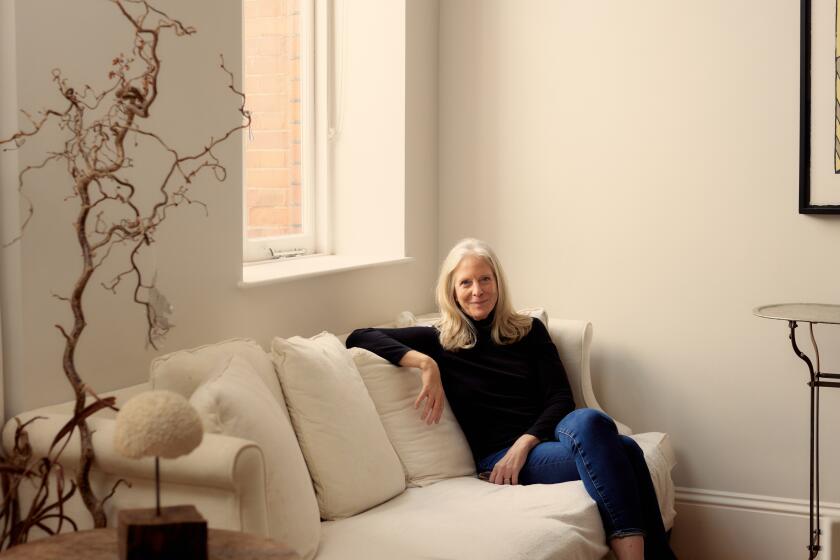‘Lessons in Chemistry’: Five changes to the series from the book, explained
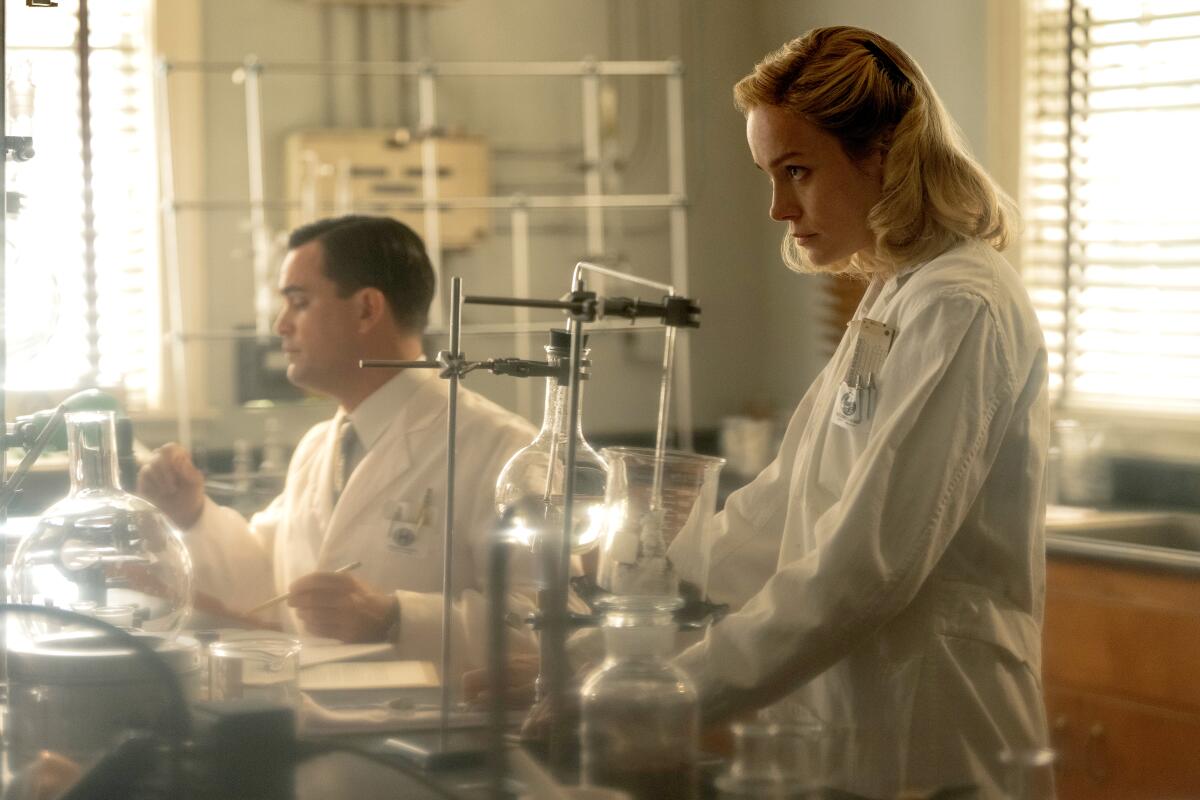
- Share via
This article contains spoilers for Episodes 1 and 2 of “Lessons in Chemistry.”
Like most Hollywood adaptions that test a book’s formula, “Lessons in Chemistry,” a fictional drama about a gifted female chemist who reluctantly becomes a TV cooking show sensation and contends with a sexist establishment, has some controlled and experimental variables that bring changes to the story onscreen.
The series was adapted from Bonnie Garmus’ 2022 bestseller of the same name, and the first two episodes have launched on AppleTV+. Lee Eisenberg, who developed the story for television, hopes devotees of the book will be pleased with how the show is faithful to the spirit of its source material without being a carbon copy of it.
“In the early conversations that I had with Bonnie, it was very much her acknowledging that she understood that we’re not transcribing her book into a TV show,” said Eisenberg. “The source material was so strong; the book was our bible in the writers room. We were sitting with it, we were consulting it, we were pulling lines of dialogue, we were taking descriptions and turning it into sets and locations.”
Sarah Adina Smith, who directed the first two episodes, said she treated the block of episodes as its own movie that set up the romance between Elizabeth Zott (played by Brie Larson, who is also an executive producer) and her colleague, Calvin Evans (Lewis Pullman); a relationship whose consequences will shape Elizabeth’s journey as the season plays out.
“It’s such a beloved book and one of the things that makes books so impactful is you can go at your own pace, and oftentimes you’ll put it down and, days later, you pick it up and your brain has time to sit with things and digest,” she said. “And so I wanted this show to have that sense of negative space in the way that we shot it and let us just enjoy and get lost in the love story and really feel the eternity of those moments. So that once it’s over, we’re just as gutted as Elizabeth.”
Here’s a guide to the changes made from book to screen in the premiere episodes, including the transformation of Harriet Sloane and how a certain canine gets his name.
The British author discusses having her bestselling book adapted for an Apple TV+ series starring Brie Larson: “It’s different from my vision, but it doesn’t mean that it’s not as good at all.”
‘Who is the real Elizabeth Zott?’
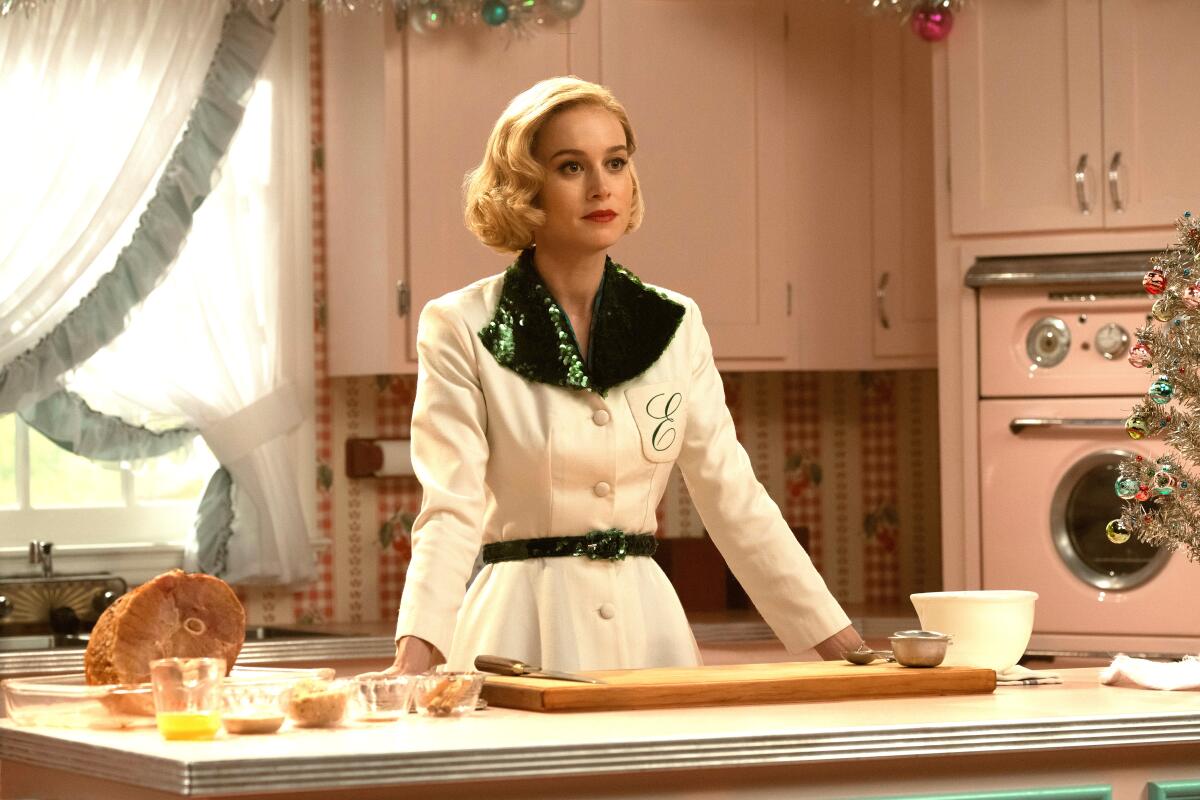
The introduction to Elizabeth Zott begins differently on the page than it does onscreen. The book opens with her as a 30-year-old permanently depressed single mother circa 1961, whose routine consists of rising before dawn to meticulously make her young daughter’s school lunch, which she would accompany with a note of motherly suggestions for the day, such as: “Play sports at recess but do not automatically let the boys win.” The reveal that she then sets off to her job as the popular star of a cooking TV show, “Supper at Six” comes at the end of the first chapter.
The series, meanwhile, begins by showing Elizabeth in the midst of her stardom. The hoopla leading up to a taping of her show fills the opening moments of the premiere episode, with eager audience members assembling outside the TV studio for a glimpse of the star. But it’s clear she’s no ordinary domestic idol. As Elizabeth makes her way through the studio, she asks things like, “Did you get the sodium chloride I requested?” When Elizabeth’s face finally appears onscreen, nearly two minutes in, she’s just jammed a pencil in her French twist and is standing in a bubblegum-pink kitchen set, ready to be a tell-it-like-it-is guide who is unafraid to challenge the status quo for the housewives tuning in. The glimpse of her life as a mother and her melancholia come into play later in the show’s run.
“I wanted viewers to feel a sense of suspense because she has become this legendary character for so many women who love her show,” said Smith, who pitched the idea when she joined the project. “I wanted us to be, like, ‘Who is this woman? Who is the real Elizabeth Zott?’ And that we would start to unpack that as we went back in time and got to meet her. It came from that of also wanting to have maximum contrast between the star of her own show to someone who, when we cut back in time, is a lab tech who’s picking up old beakers and making coffee, and I wanted to make sure that we felt that difference really clearly.”
Eisenberg added: “Part of it was we’re seeing Brie Larson, but we’re also seeing Elizabeth Zott for the first time, and how do you capture one of the most iconic images from the book? The cover is Elizabeth Zott with a pencil in her hair. That was something we wanted to get to early on. We love the energy of setting up who this character will become. And then, going back in time and seeing her in a lab and thinking, ‘Well, how could she possibly get from assistant chemist at a lab to the host of her own cooking show?’”
Calvin’s deadly run

Elizabeth is a brilliant lab tech at Hastings Research Institute — who endures harassment and disrespect by her male colleagues — when she meets Calvin, the extraordinary and lonely superstar of the same lab with a penchant for rowing. Both are socially awkward introverts who have an unpleasant first encounter: In the book, he’s unwilling to share his surplus of beakers, which she takes anyway; in the series, she sneaks into his lab to get access to ribose. Their chemistry, though, is undeniable and the two eventually find themselves working together, living together, rowing together and raising a dog, Six-Thirty, together. As their relationship gets serious, Elizabeth makes it clear to Calvin that, because of her career ambitions, she has no interest in getting married or becoming a parent, which he accepts.
But like science, the unpredictability of life takes over and the second episode ends with Calvin, while on a run with Six-Thirty, being fatally hit by a bus. In the book, Calvin is out one night walking Six-Thirty and gets run over by a police car. Elizabeth soon finds herself jobless, single and on the brink of parenthood, learning she’s pregnant after Calvin’s death.
“We talked a lot about the death, about the timing of the death, how much story we wanted to have before we got there,” Eisenberg said. “When the show begins, we’re setting up all of these different paths that Elizabeth could go down. One of them is this unlikely love story between these two people who fall in love, initially, through their passion for the sciences, and then see a depth in each other. But it’s also about grief and loss and how that person stays with you forever, but also you continue on. That was something that we discussed ad nauseam in the writers room. It was less about the details of the death. I honestly don’t remember the logistics of why we made the changes we did. It was probably what a dog is capable of doing. I think we wanted Calvin on one of his runs. It was really about the surprise of it — hopefully it’s not what you’re expecting at all.”
Six-Thirty is a goldendoodle

One of the book’s most beloved characters has four legs and an active internal monologue: Elizabeth and Cal’s dog, Six-Thirty. After flunking out of the Marines as a bomb-sniffing dog, the mixed-breed stray was roaming the streets when he followed Elizabeth home one day. His unique name commemorates the time of day when he comes into her life. And his intelligence is a perfect match for Elizabeth: He learns nearly 1,000 English words and his insightful perspective on his family’s adventures make him one of the novel’s key narrators.
“I think Six-Thirty is going to be the most controversial character for fans of the book because the thing about it is, when you’re reading a book, everybody pictures these characters differently,” Smith said. “So everyone probably had a very different idea of what kind of dog Six-Thirty was. There’s probably no way we’re gonna make everybody happy.”
In the series, he’s a goldendoodle played by dog actor Gus. He enters Elizabeth’s life after rummaging through her garbage in the alleyway of her home one night and is named for the time he wakes her up each morning.
“We understand the introduction of this character was something very special,” Eisenberg said. “I started to think about military background and military time — all of the soldiers were waking up at a specific time, and dogs were being pulled out of their kennels at 6:30 on the dot. There was a precision to it. Maybe that was a way of slightly tweaking the lore from the book.”
In next week’s episode, “Living Dead Things,” Six-Thirty’s point of view will come into play as he observes the fog of grief consume Elizabeth after Cal’s death. He’ll be voiced by B.J. Novak.
“Much of the book is told from the perspective of the dog,” Eisenberg said. “From a production standpoint, it would be impossible to have the dog get as many things and be as smart as he was in the book; it would have taken all of our production days in order to accomplish that. Having Six-Thirty be the narrator for the grief episode was something that was very intriguing to us and and I thought could be very powerful. Everyone experiences grief differently — and it’s not only experiencing grief, it’s also being there for someone when they’re experiencing grief and that level of helplessness, and that you want to say the perfect thing that will take away the pain, that will take away the loss. And what you realize is, there’s nothing you can do. Comfort will help, but nothing can change what happened. And seeing that struggle from a dog who says I didn’t have the words was, to me, very powerful.”
The transformation of Harriet Sloane
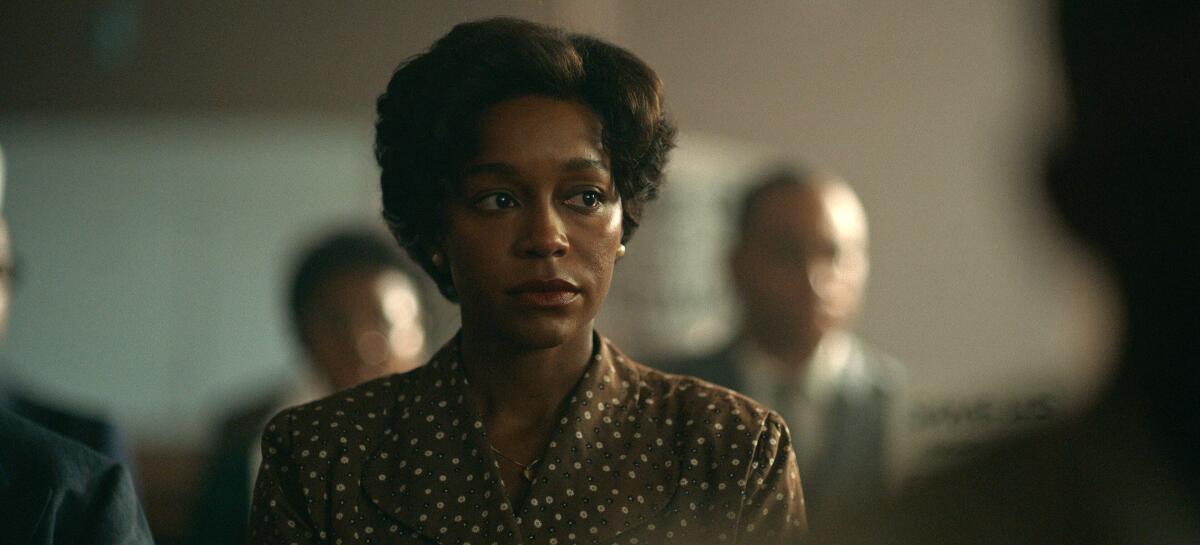
Another pivotal relationship in Elizabeth’s journey to letting down her guard is her friendship with Harriet Sloane. In the book, Elizabeth’s neighbor, who lives across the street, is a 55-year-old woman with grown children who is in an unhappy, abusive marriage. Harriet becomes an anchor for Elizabeth, helping the reluctant mother navigate parenthood; in the process, Harriet finds relief from her reality and eventually leaves her husband before beginning a relationship with “Supper at Six’s” producer Walter Pine. Her character undergoes the biggest transformation in page to screen.
In the series, Harriet (Aja Naomi King) is closer to Elizabeth’s age. She is a poised and determined legal aide who has two young kids and is in a loving marriage with a doctor. Eisenberg says part of the character’s alteration was in response to the casting process.
“We came across Aja Naomi King for a different role,” that Eisenberg said they ultimately did not pursue. “We were obsessed with her. And we had the role of Harriet that we hadn’t yet cast and we started talking about, ‘Well, if we cast Harriet and we have Aja, we’re now going to be competing for screen time. Is there a version of taking Aja and making her Harriet? And what if we made her a young Black female lawyer during that time?”
In a deviation from the book, Harriet has a friendship with Calvin before she forms a bond with Elizabeth.
“We talked about these unlikely connections and friendships that existed in the book and that we really leaned into in the series,” Eisenberg said. “When we meet Calvin, he’s very much alone in the world. He runs to work, he works on his experiments alone, he has this isolated life, but we didn’t want it to be so black and white in that instance. This idea that Calvin sometimes is a support system for Harriet as an unlikely babysitter, and what Calvin could have been like as a father, was something that we wanted to explore. We liked that Calvin and Harriet are there for one another. We also liked that the characters in the show are flawed; we’re not putting people up on a pedestal. And Calvin disappoints Harriet in a very big way — and how do friendships come back from that? “
The 10 Freeway
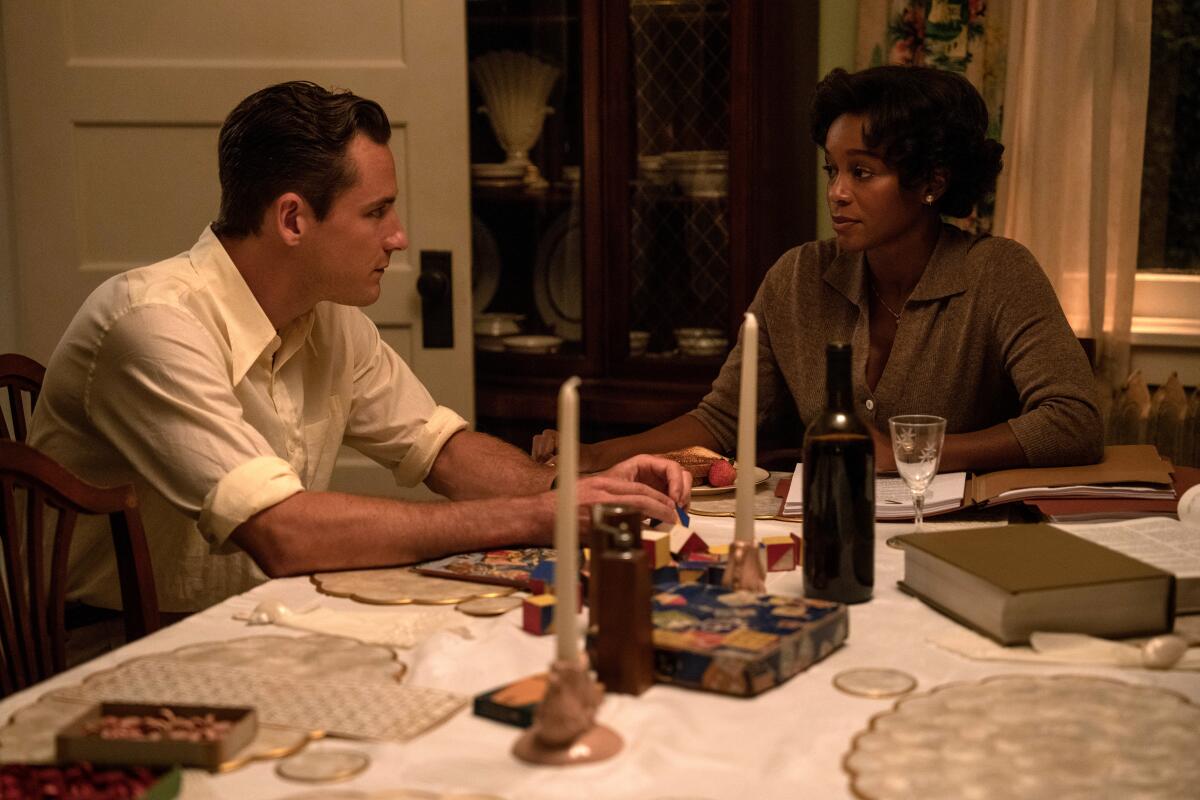
Much of Harriet’s new storyline involves her impassioned fight to stop the building of the 10 Freeway through their neighborhood, which is predominantly Black, and is inspired by the real-life destruction of the Sugar Hill district in historic West Adams in the 1960s. She leans on Calvin and Elizabeth’s support at different moments in her crusade. Harriet asks Calvin to attend a City Council meeting, where her committee would present their case against the freeway, in order to show that the cause is supported by all its constituents; but he loses track of time with Elizabeth on a rowing expedition and forgets to attend. Later in the season, she’ll seek the help of Elizabeth. Eisenberg was interested in the juxtaposition of their experience as women.
“We started doing research, and we found the Sugar Hill neighborhood in West Adams and the 10 Freeway and this movement and this racist bureaucracy that was going to try and place the 10 Freeway through this very upper middle class, predominantly Black neighborhood filled with doctors and lawyers and some of the biggest entertainers of that time,” Eisenberg said. “Looking at Harriet’s story, parallel with Elizabeth’s story — Elizabeth as a white woman during that time, who’s pushing up against sexism and discrimination in the workplace — and to see someone who’s contending with all the things Elizabeth is contending with, but with the added layer of of race into it. [Harriet] is also not only fighting for women’s rights, she’s fighting for survival, she’s fighting for her neighbor, she’s fighting for our community. Seeing her and Elizabeth find a friendship and commonality, but also seeing moments where the two of them push back against one another — particularly Harriet pushing back against Elizabeth and saying, you have an opportunity here and what you say matters. That scene, which comes later in the series, that was really powerful. To see this dynamic between these two women during that time was something that felt like an extension of so many of the things that existed in the book, even though it was a deviation.”
More to Read
The complete guide to home viewing
Get Screen Gab for everything about the TV shows and streaming movies everyone’s talking about.
You may occasionally receive promotional content from the Los Angeles Times.
